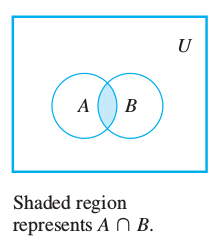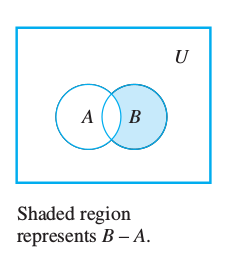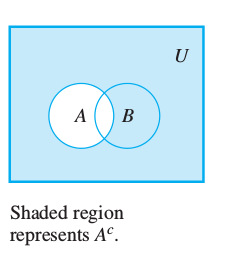-

[Ended] Mathematics Tutoring Session #4 (set theory) @7:00 - 8:00AM on Saturday (19th Feb. 2016)
Mathematics
Inyang Umoh (tutor)
20-02-2016 05:47:00 +0000Hello everyone, my name is David and I'll going to answer any questions you have on set theory for the next hour.
Try to keep your question on the topic of set theory so that everyone can get the most out of this session. I'll try my best to answer as many questions as possible.
Before we get going it important that you understand the meaning of basic symbols used in set theory. So please review the attached image.
Please give us your feedback after the session: http://goo.gl/forms/XVVy7QkNb5
Background (please read before asking questions)
Set theory is one of the first things any jambite that is taking the math exam should study because it is one of the easiest concepts tested on the exam. Even those for which math is not their strong suit find this topic easy. So lets try to master the concepts behind set theory this morning. For this discussion I will use the following examples.
Let A be the set of people that are Arsenal fans and
Let B be the set of people that are Barcelona fans
Let U be the set of all football fans

-
Inyang Umoh (tutor)
Welcome everyone. Let me start by defining a few terms based on the sets A and B defined above. One of the best ways to illustrate it is by using a venn diagram. This diagram show the UNION of A and B. The union is the set of values that are either in A and B. That is the people that are either Arsenal fans or Barcelona fans

0 20-02-2016 06:03:00 +0000
-
Inyang Umoh (tutor)
The blue area represents the union of A and B. usually written like so: A U B
0 20-02-2016 06:05:00 +0000
-
Inyang Umoh (tutor)
This diagram shows the INTERSECTION of A and B. The intersection is the set of values that are both in A and B. That is the people that are either Arsenal fans AND also Barcelona fans

0 20-02-2016 06:09:00 +0000
-
Inyang Umoh (tutor)
One may also want describe all the people that are Barcelona fans but not also Arsenal fans. This is called the SET DIFFERENCE between B and A. This is represented by B - A and illustrated in the diagram below

0 20-02-2016 06:14:00 +0000
-
Inyang Umoh (tutor)
And finally, set theory allows you to describe things that are not in a set. For example if we wanted to represent all the football fans that are not Arsenal fans we would write it as follows A^c . This concept is also referred to as the COMPLEMENT of A

0 20-02-2016 06:19:00 +0000
-
Inyang Umoh (tutor)
@paschal Y = {1, 3, 5, 7, 9, 11, 13, 15} but you haven't provided X so this can't be solved
0 20-02-2016 06:25:00 +0000
-
Inyang Umoh (tutor)
I will solve a similar question from 2015 Jamb. Given:U = {Even numbers between 0 and 30} P = {Multiples of 6 between 0 and 30} Q={multiples of 4 between 0 and 30}. Find (PuQ)^c
0 20-02-2016 06:32:00 +0000
-
Paschal Nkemjika
A school has 16 boys who serve on the debating, science and mathematics clubs. Of these, 5 serve on the debating club only, 4 on mathematics club only, 2 on both debating and sciences clubs only but nobody serves on all the 3 clubs. All the clubs have equal number of members (a) find the boys that serve on each club (b) probability that a boy is selected at random serves on the science club only
0 20-02-2016 06:33:00 +0000
-
Inyang Umoh (tutor)
U = {0, 2, 4, 6, 8, 10, 12, 14, 16, 18, 20, 22, 24, 26, 28, 30} P = {6, 12, 18, 24, 30} Q = {4, 8, 12, 16, 20, 24, 28} Since we are being asked to solve for (PuQ)^c first we find the UNION of P and Q. Which is all the numbers in P OR Q which are 6, 12, 18, 24, 30 and also 4, 8, 12, 16, 20, 24, 28
But since a set must include only unique elements, we have get the following: P U Q = {4, 6, 8, 12, 16, 18, 20, 24, 28, 30} Finally we need to find all the numbers in U that are NOT in P U Q. So we end up with {0, 2, 10, 14, 22, 26}0 20-02-2016 06:39:00 +0000
-
{[reply.name]}
{[reply.voteCount]} {[reply.voteCount]} {[reply.created]}
{[reply.voteCount]} {[reply.created]}

